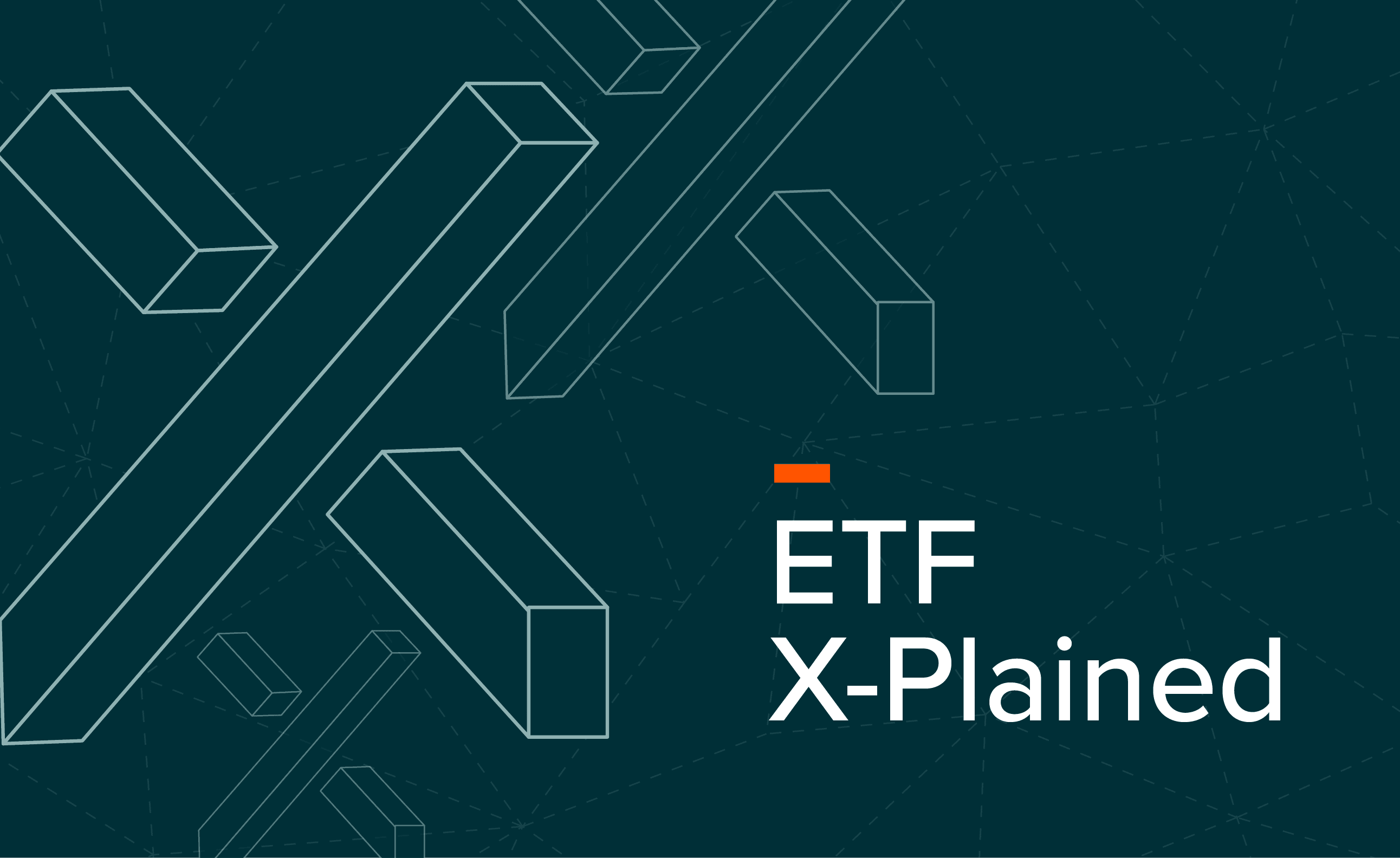For a browsing experience tailored to your needs
Select Your Location
Global X is dedicated to helping you build wealth
With over US$632 billion of assets under management, Global X currently serves thousands of advisers and more than 1 million investors.

Global X is dedicated to helping you build wealth
With over US$632 billion of assets under management, Global X currently serves thousands of advisers and more than 1 million investors.


Leveraged & Inverse ETFs
Express your conviction and capture market opportunities with these powerful trading tools and take advantage of bullish or bearish economic and market conditions.
Investing in Leveraged and Inverse ETFs
Geared or leveraged funds are commonly used by highly experienced investors and traders to express high conviction over short investment periods . These products use derivatives to provide amplified returns, which allows investors to gain more exposure than their upfront capital. Leveraged and inverse ETFs can be used to express a high-conviction view on the future performance or outcomes of upcoming events, such as economic data releases or earnings announcements. They may also be employed to achieve short exposure or to hedge pre-existing long positions.
These trading products can be used as speculative stand-alone positions or to implement temporary shifts in asset allocation. Positions are often taken over very short periods, sometimes less than a day. Given their nature, leveraged and inverse ETFs are particularly suited for those looking to make tactical moves based on market expectations and events, allowing for flexibility in portfolio management.
Global X Leveraged and Inverse ETF Lineup
Performance of Leveraged ETF and Inverse ETFs
Global X offers one leveraged and one inverse ETF, both focus on the Nasdaq 100, an index packed with some of the largest tech companies in the world. Below we detail how they performed over the last 12 months.
Global X Ultra Long Nasdaq 100 Complex ETF (LNAS)
The Global X Ultra Long Nasdaq 100 Complex ETF (ASX: LNAS) is designed to provide positively geared returns ranging from 200% to 275% of the Nasdaq 100 index's movements. This means if the Nasdaq 100 goes up 1%, LNAS can provide up to 2.75% in returns. However, if the Nasdaq 100 falls, LNAS can also amplify the fall by up to 2.75x. The Nasdaq 100 is heavily weighted to large technology stocks, including many household names like Apple, Microsoft, and Tesla.
Past performance is not a reliable indicator of future performance.
Why Invest in LNAS? Geared funds like LNAS are tactical tools used by experienced investors to gain amplified exposure to market movements. Their ability to amplify returns can make them appealing, however one must be wary that losses will also be amplified.
LNAS is often used to take a position on future market events, such as economic data or earnings reports. It can be a stand-alone position or part of a temporary asset allocation shift.
Global X Ultra Short Nasdaq 100 Complex ETF (SNAS)
The Global X Ultra Short Nasdaq 100 Complex ETF (ASX: SNAS) is an actively managed fund that aims to deliver inversely geared returns ranging from 200% to 275% to the returns of the Nasdaq-100 Index. This means if the Nasdaq 100 goes down 1%, SNAS can provide up to 2.75% in positive returns instead. However, if the Nasdaq 100 rises, SNAS may lose value by up to 2.75x the upward movement.
Like LNAS, SNAS also tracks the Nasdaq 100 Index which is heavily weighted to large technology stocks, such as Nvidia, Amazon, and Meta.
Why Invest in SNAS? Geared funds like SNAS are tactical tools used by experienced investors to gain geared, short exposure to market movements.
SNAS is often used to take a position on future market events like economic data or earnings reports. It can provide short exposure, hedge long positions, or be used for short-term asset allocation changes in order to potentially benefit from market declines.
How Do Leveraged and Inverse ETFs Work?
Both SNAS and LNAS use derivatives, primarily E-mini Nasdaq-100 Futures contracts listed on the Chicago Mercantile Exchange, to gain exposure to the Nasdaq-100 Index. These derivatives provide gearing or leverage, offering market exposure beyond the upfront investment required. For both funds, the initial cost of opening a futures position is zero, though transaction costs and an initial margin are required, with the margin adjusted daily based on gains or losses. As the Nasdaq-100 fluctuates, the gearing in each fund changes, and the manager rebalances exposure to maintain the target range.
Currency hedging for both funds is achieved through foreign exchange forward contracts, where the fund agrees to sell U.S. dollars and buy Australian dollars at a fixed rate on a future date. The key difference between the two funds is their approach: SNAS uses short futures to bet on a decline in the Nasdaq-100, while LNAS uses long futures to bet on its rise.
How to Invest in Leveraged and Inverse ETFs with Global X?
So, how do you actually get started if you want to invest in a leveraged ETF with Global X? First, you will need a brokerage account or consult with your financial adviser. Once your account is set up, it is just a matter of searching for the ETF ticker (LNAS or SNAS), reading the relevant PDS and TMD, and executing the trade.
Get more information on how to invest with Global X.
What Are the Benefits of Investing in Leveraged and Inverse ETFs?
There are some key benefits in using leveraged and inverse ETFs:
Potential for Amplified Returns
To start, leveraged ETFs have excellent potential for amplified returns. So, if you are confident about the direction of a particular market or sector, a leveraged ETF allows you to take a much larger position without putting up as much capital as you would need with traditional long or short investments.
Targeted Exposure
Leveraged ETFs also provide targeted exposure to specific indices or sectors, and instead of buying individual stocks, you can use a leveraged ETF to gain concentrated exposure to high-growth areas like tech or to short the market when you expect it to fall.
Transparency
This type of ETF is also liquid and transparent, meaning they trade like other investments on the stock market throughout the day, allowing you to get in and out as needed.
Are There Risks of Investing in Leveraged and Inverse ETFs?
As with all investments, leveraged and inverse ETFs have some key risks. Noting, as these funds amplify upward or downward market movements, they are considered a higher risk strategy.
Amplified Losses
The biggest risk with leveraged ETFs is amplified losses. Just as leverage can double your gains, it can also double, or even triple, your losses. This means if there is market volatility and it moves against your position and you could suffer significant losses.
Compounding Risks
Another big consideration is compounding risk. These ETFs are designed to track daily movements, and over longer periods, the effects of compounding can lead to results that deviate quite from the underlying index, which makes them less ideal for a "buy-and-hold" strategy.
Market Timing Risk
There is also the issue of market timing risk to consider. Leveraged ETFs are for short-term trades, so timing the market is incredibly important, and if your timing is off, the losses can increase up much faster than with non-geared ETFs – making geared ETFs a more suitable option for experienced investors.
Are There Risks of Investing in Leveraged and Inverse ETFs?
As with all investments, leveraged and inverse ETFs have some key risks. Noting, as these funds amplify upward or downward market movements, they are considered a higher risk strategy.
Amplified Losses
The biggest risk with leveraged ETFs is amplified losses. Just as leverage can double your gains, it can also double, or even triple, your losses. This means if there is market volatility and it moves against your position and you could suffer significant losses.
Compounding Risks
Another big consideration is compounding risk. These ETFs are designed to track daily movements, and over longer periods, the effects of compounding can lead to results that deviate quite from the underlying index, which makes them less ideal for a "buy-and-hold" strategy.
Market Timing Risk
There is also the issue of market timing risk to consider. Leveraged ETFs are for short-term trades, so timing the market is incredibly important, and if your timing is off, the losses can increase up much faster than with non-geared ETFs – making geared ETFs a more suitable option for experienced investors.
Related Funds
Enter your details below to download the
Thank you
Your download will start immediately. If your download does not begin, please click the button below.
Subscribe
Why subscribe?
By subscribing to email updates you can expect thoroughly researched perspectives and market commentary on the trends shaping global markets. Topics may span disruptive tech, income strategies, and emerging economies.
We adhere to a strict Privacy Policy governing the handling of your information. And you can, of course, opt-out any time.



